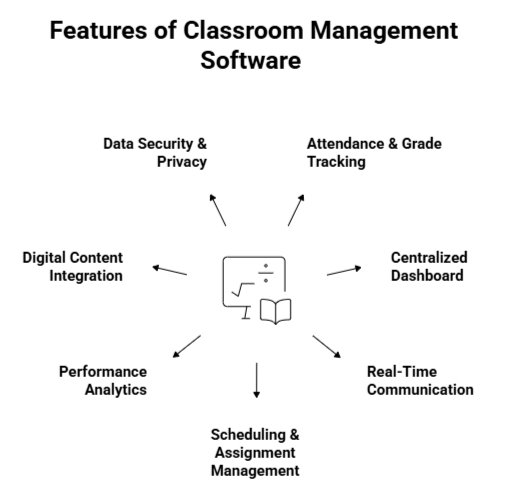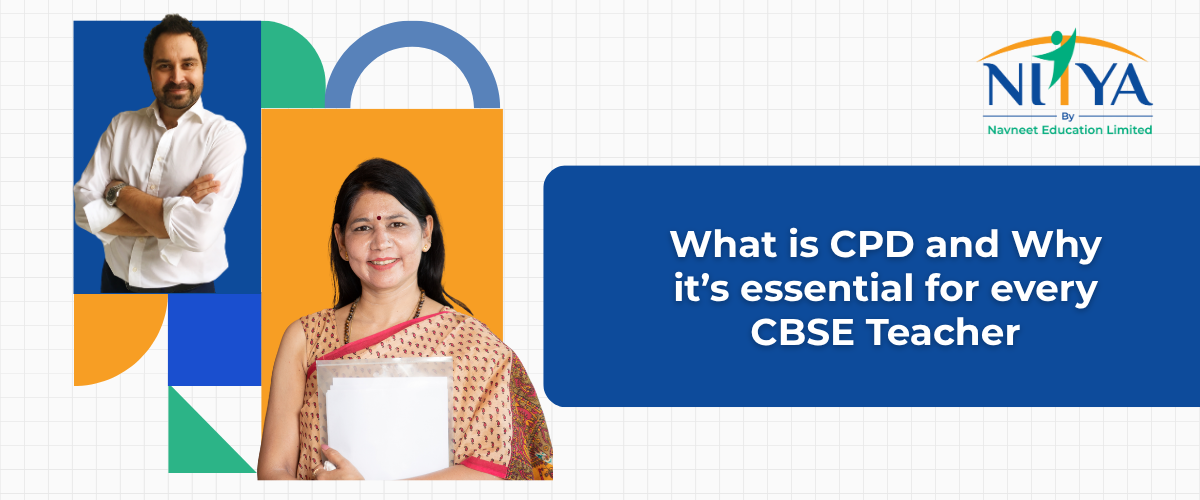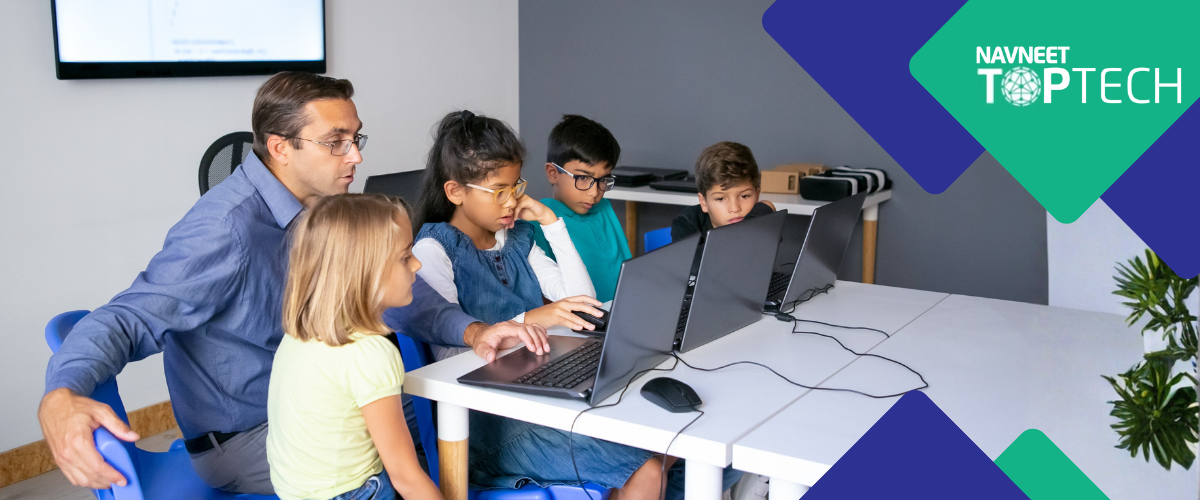Every school day is filled with moving parts, attendance registers being passed around, assignments being distributed, updates being shared, and student progress being tracked. On an average, teachers spend over 5 hours a week just marking attendance, updating spreadsheets, and juggling classroom logistics, time that could be spent sparking curiosity or deepening understanding. It’s a quiet drain that adds up, hidden in the everyday rhythm of the school day. That’s where classroom management software steps in: to simplify teaching, streamline coordination, and create a more focused learning environment.
When classrooms function at scale, these everyday processes often take more time and energy than expected. As education moves toward a more digital and connected future, having the right classroom management software for schools is no longer just a convenience, it’s a foundation for smooth, effective learning.
Let’s explore what classroom management software does, why schools need it, and which features truly make a difference.
What Is Classroom Management Software?
Classroom management software is a digital platform that helps teachers and administrators plan, monitor, and manage classroom activities with greater efficiency. It acts as a central hub for attendance, assignments, grades, communication, and performance reports.
For example, a teacher can mark attendance in seconds, assign homework to multiple classes, and check submissions, all within a few clicks. Similarly, students can log in to access study materials, submit assignments, or check their progress without depending on printed notes or separate apps.
In essence, this digital classroom management software makes learning more organized, communication faster, and teaching more effective.
Why Schools Need Classroom Management Software
Running a classroom smoothly involves hundreds of small decisions every day. Without the right tools, these small tasks can pile up and make teaching more stressful than it needs to be. Here’s what schools often struggle with and how technology can change that.
1. Manual work that consumes teaching time
In many schools, teachers still spend the first 10 minutes of every period taking attendance manually, then later enter the data into spreadsheets or registers. When multiplied by several classes, that’s hours lost every week that could be spent on actual teaching or student mentoring.
Digital classroom management software automates these routine tasks, giving teachers back their most valuable resource, time. Instead of spending half the morning on administrative duties, teachers can dive straight into lessons, better connecting with students.
2. Low student engagement in large or hybrid classrooms
Keeping students engaged, especially in mixed physical and online environments, is a daily challenge. Without interactive tools or real-time feedback, teachers often struggle to maintain attention. For example, a science teacher explaining experiments virtually may find that half the students are disengaged because there’s no visual collaboration or an easy way to ask questions.
Classroom software with live polling or shared whiteboards can make such sessions inclusive. Interactive dashboards, quizzes, and discussion features within digital classroom management software enable teachers to track attention and participation in real-time, keeping students engaged and motivated.
3. Communication gaps between teachers, students, and parents
When communication depends on multiple channels, phone calls, emails, and paper circulars, important updates are easily missed. A parent may not know their child missed three assignments until a report card arrives. Integrated communication tools solve this by keeping all stakeholders informed instantly. With real-time communication tools, reminders, and notifications, everyone stays aligned.
4. Disconnected data systems
Grades, attendance, performance analytics, and feedback often live in separate tools, making it hard for teachers to get a full view of a student’s progress. A centralized system consolidates data, helping teachers and administrators identify issues early and act on them, for instance, identifying when declining attendance correlates with lower grades.
NAVNEET TOPTECH, through its innovative classroom solutions, helps schools overcome exactly these challenges, simplifying daily workflows while improving teaching impact. It makes school operations seamless and teaching more rewarding.
Top Features to Look for in Classroom Management Software

To truly add value, a platform must be more than a digital register or assignment tracker. Here are the most essential classroom software features schools should look for.
a. Easy Attendance and Grade Tracking
Automation reduces the time teachers spend on routine tasks. Attendance can be logged instantly through roll calls, ID scans, or online check-ins, while grades are updated in real time. This not only saves several hours each week and ensures complete accuracy but also frees teachers to focus on personalized instruction.
b. Centralized Dashboard for Teachers and Students
An ideal classroom management platform provides a unified dashboard for all users. Teachers can manage multiple classes, upload study materials, and track progress from one interface, while students can access assignments and resources anytime without missing deadlines.
Platforms like NAVNEET TOPTECH design dashboards that are clean, responsive, and easy to navigate, even during a busy school day.
c. Real-Time Communication Tools
Announcements, chat windows, or discussion boards keep everyone connected. Teachers can send reminders for upcoming tests, parents can receive updates about attendance or grades, and students can clarify doubts instantly. This real-time loop strengthens accountability and reduces confusion. It also strengthens collaboration between teachers, students, and parents, reducing miscommunication and delays.
d. Class Scheduling and Assignment Management
A good classroom management software for schools simplifies academic scheduling. Teachers can set up timetables, schedule assignments, and even create automated reminders for submissions. For instance, a teacher planning weekly assessments can pre-set dates, attach resources, and notify students automatically. It reduces last-minute confusion and helps students stay organized, improving submission rates and overall discipline.
e. Performance Analytics and Reports
Data-driven teaching is key to improving outcomes, helping teachers identify learning patterns and intervene early when students need help. Modern software generates detailed reports on student attendance, grades, and participation, enabling smarter decision-making and personalized learning plans for students. Over time, these insights help administrators make informed decisions about curriculum and resource allocation.
f. Integration with Digital Content or Smart Boards
Today’s classrooms thrive on interactive learning. When software integrates with digital content or smart boards, teachers can use multimedia resources, animations, or quizzes directly during lessons to boost engagement and understanding. NAVNEET TOPTECH’s digital ecosystem connects seamlessly with smart classroom tools, helping teachers create engaging, tech-enabled learning experiences.
g. Data Security and Privacy Controls
Schools handle sensitive data daily, from student grades to personal details. With increased digitization, data privacy becomes critical. Schools should ensure the software complies with data protection standards, encrypts sensitive information, and controls access based on user roles. Reliable software protects both student records and institutional integrity.
4. How to Choose the Right Classroom Management Software
Once schools know what to look for, the next step is making the right choice. Here are key considerations to guide that decision:
- Check for a user-friendly interface: Teachers shouldn’t need extensive training to use it. The best software should be easy and feel intuitive.
- Ensure mobile compatibility: Access from mobile devices keeps teachers flexible and responsive. Whether taking attendance during outdoor activities or sending updates after class, mobile access increases ease of use.
- Ask for a demo or trial: A hands-on trial helps schools understand whether the platform aligns with their workflow.
- Read reviews or case studies: Learning from peer schools’ experiences offers valuable perspective on usability and support and gives confidence in long-term value.
Many schools across India trust NAVNEET TOPTECH’s digital classroom solutions for their simplicity, adaptability, and proven results. The platform combines robust technology with an educator-first design, helping teachers focus on what truly matters, teaching.
The Way Forward
Choosing the right classroom management software is not just a technological upgrade; it’s an educational strategy. The right platform streamlines routine processes, reduces teacher workload, and enhances collaboration across the entire school community.
By evaluating features carefully and aligning them with daily classroom needs, schools can create an ecosystem that’s both efficient and inspiring. Lets simplify classroom management? Book a free demo of NAVNEET TOPTECH and see how your school can transform learning efficiency.




